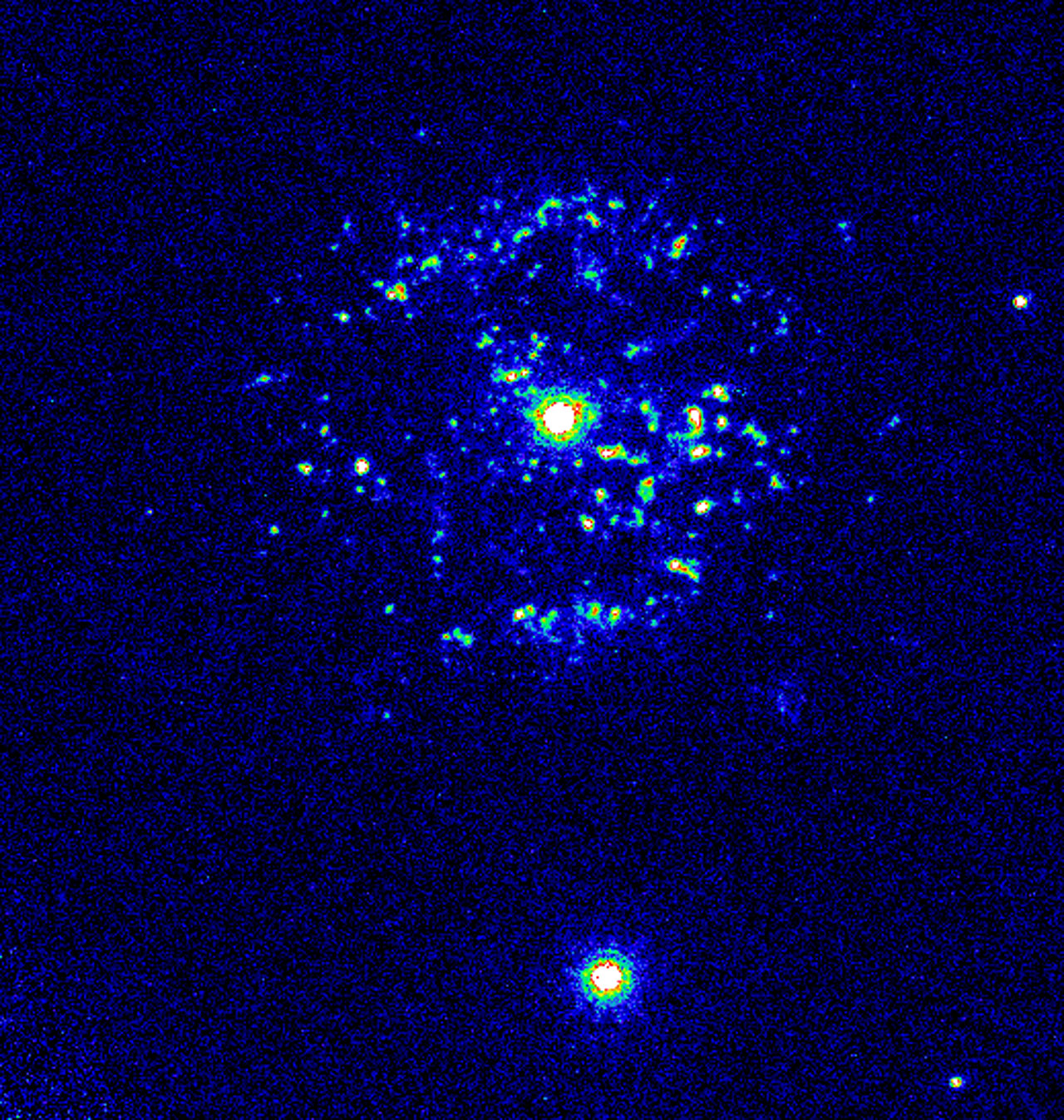In the constellation Pyxis, the binary star T Pyxidis just got 2,500 times brighter! This sudden outburst, making it visible with binoculars, has been expected for 45 years.
Sleeping since 1966
T Pyxidis is a recurrent nova, i.e. a couple of stars in which a white dwarf is ripping matter off its companion, a Sun-like star.
When the accretion of matter crosses a certain threshold, a nuclear explosion is triggered, resulting in a burst of luminosity (see the video below). This phenomenon is more or less periodic, it already happened to T Pyxidis in 1890, 1902, 1920, 1944 and 1966. And then nothing, until April 15, 2011.
© ESO/M. Kornmesser
Unjustified fear
Last year, T Pyxidis had its moment of fame. Erroneous information provoked the fear that, given its proximity (3,300 light-years), its explosion into a type Ia supernova could threaten Earth. Indeed, a researcher mixed up the effects of this kind of supernova, harmless at such a distance, with those of a gamma-ray burst.
In addition, T Pyxidis will not explode into a supernova anytime soon: it will enter a state of hibernation for the next 2.6 million years (during this period of time, the white dwarf will not accrete any matter from its companion). A good reason to observe T Pyxidis right now!

A “new” star visible in the Southern hemisphere
If some of you happen to live somewhere in the Southern hemisphere, don’t lose the rare opportunity to see this nova. Its constantly increasing magnitude, which will reach a maximum of 6.4 on May 20, 2011, makes it visible with binoculars (usually with a 15.5 magnitude, it is only visible to bigger telescopes). The star is visible in the early evening in the constellation Pyxis, and you will find it at the following coordinates: 9 h 4 min 41 s and -32°22’47”.


